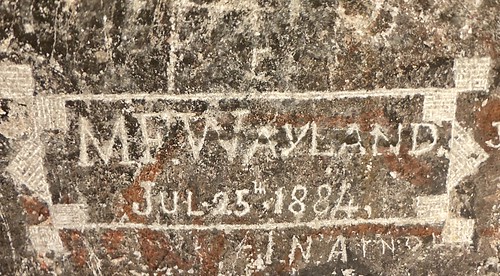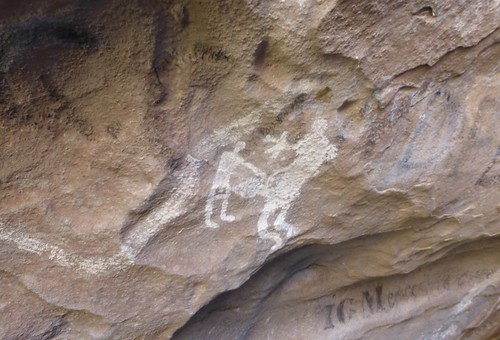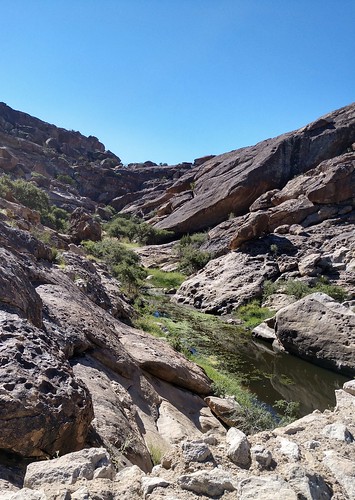
This is upper Mescalero Canyon in the heart of the tanks. The impounded water is a remnant of a stock pond behind a dam built in the 1800s early 1900s by the ranch family that lived at the tanks. The diagonal slash of rock and shadow center right is Comanche Cave, and at the head of the canyon is another cave complex that Kiowa warriors used to escape the Mexican army in 1839. We pushed up an aoudad ewe and her kid here.
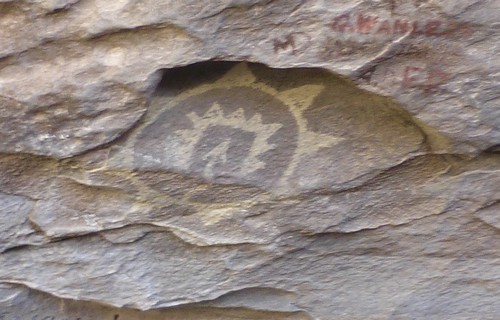
This is a Tiguan map of sorts, the three-sided box and arrow within the sun believed to tell wanderers from the tribe how to return to their homelands here in New Mexico.
I learned the hard way that within these caves and overhangs, even with seemingly abundant ambient light on a brilliant day in early fall, your camera may seem to have enough light, but the exposures are longer than you think and you need a tripod or at least a very serious effort to hold still to get decent focus. Will get it right next time!
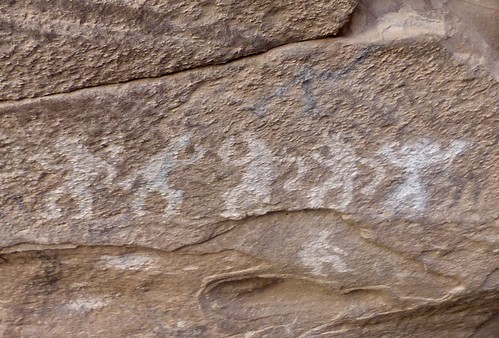
These are the five dancers of the mountain gods. I have forgotten if the story is Kiowa, Tiguan or Apache. The legend is that two warriors, one blinded in one eye and one with an injured leg, were left by their party with food and water in a cave, and a stone rolled in front of the cave to keep them safe until their tribesmen could return. The two ran out of food and water and were feeling helpless when they became aware of five dancers -- four of them white and one of them black -- within their hiding place. As the figures danced around them, one used a sword to slash the warrior with the injured eye, and he could see, and slash the warrior with the injured leg, and he could walk. And finally the figure slashed the boulder blocking the cave entrance and the boulder vanished. The two men left the cave and below them were hundreds of people -- their tribe, joyfully waiting to receive them.
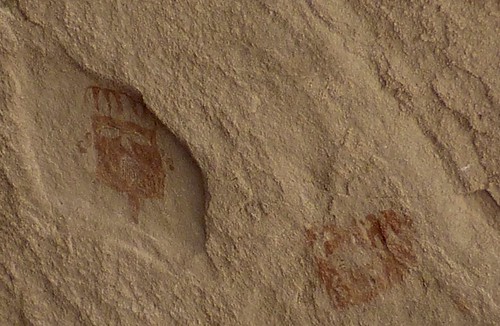
This is a finely detailed pictograph -- painted versus a petroglyph pecked -- attributed to the Jornada-Mogollon peoples, A.D. 200-1400. Possibly red ochre mixed with a binder and painted with a fiber brush made from sotol.
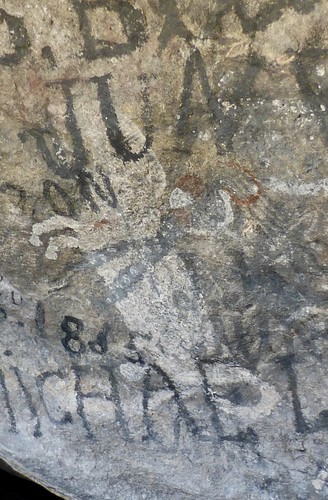
At Site 17 at the tanks, beneath the overlying lettering done in the grease from wagon axles, you can see a horse rearing with its rider -- attributed to the Mescalero Apache, who of course knew the horse, a "recent" arrival. Many people signed this wall at the tanks near what was believed to be a Butterfield stage station -- including my great-great uncle on July 25, 1884.
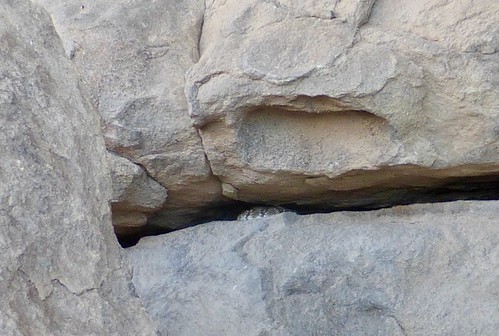
It was cool in the shade of this overhang when someone noticed Mr. Buzztail all curled up in this crack, wondering no doubt why it was darned chilly.

